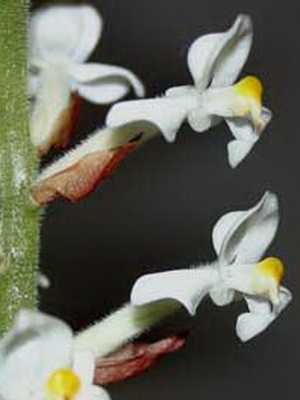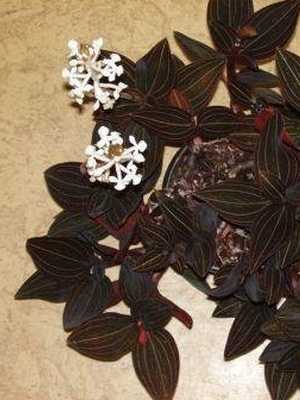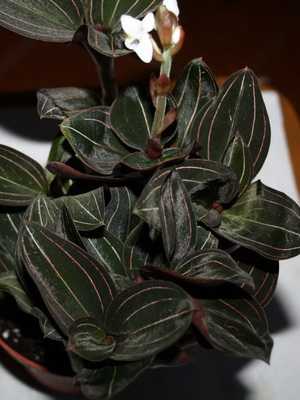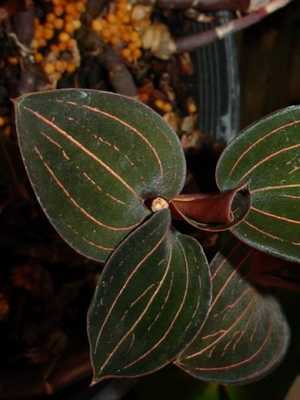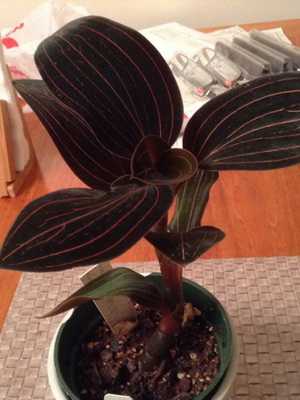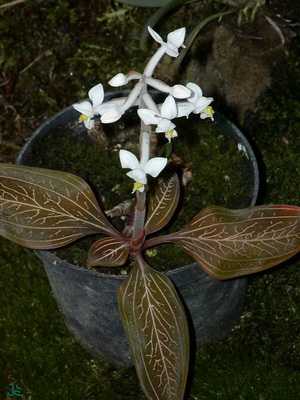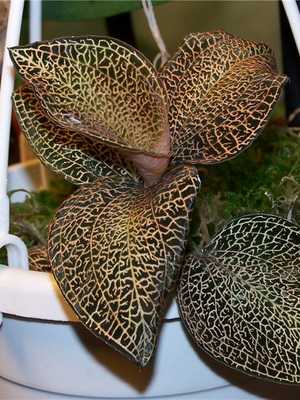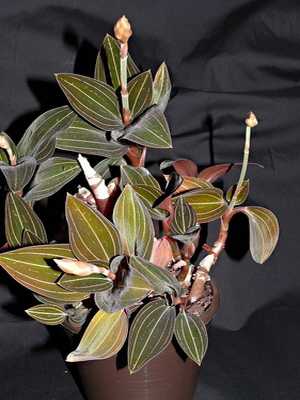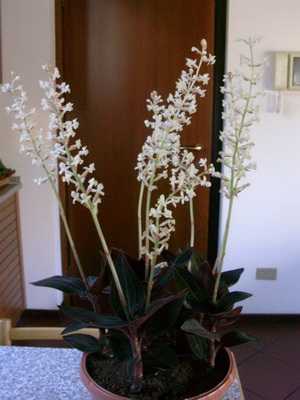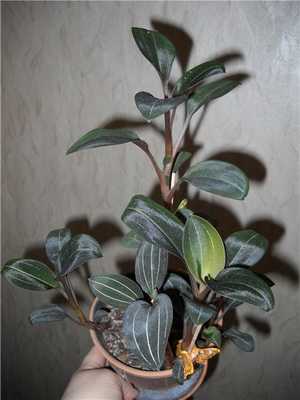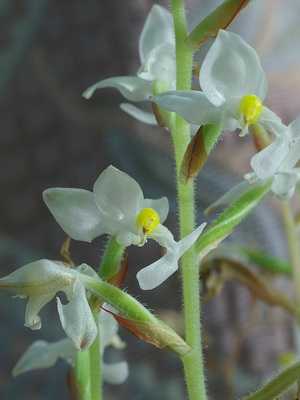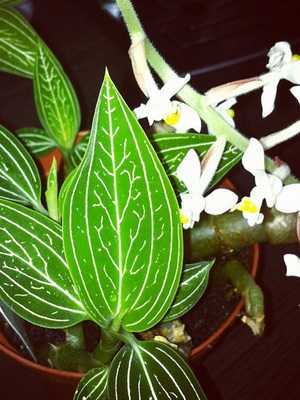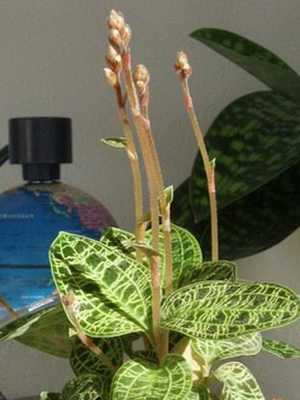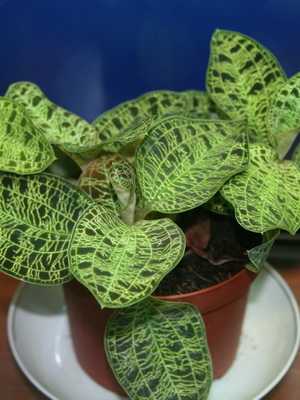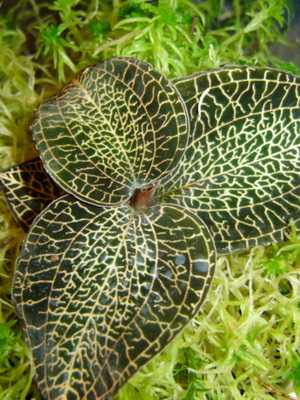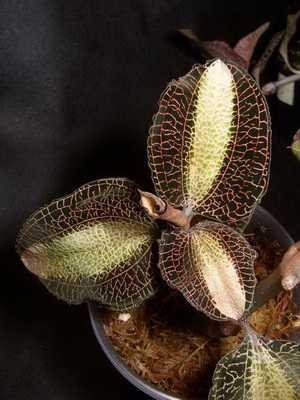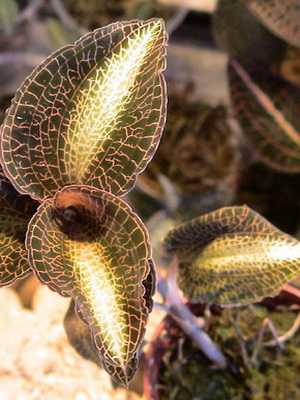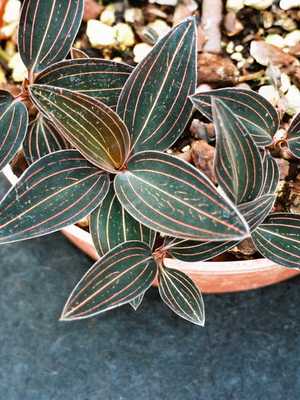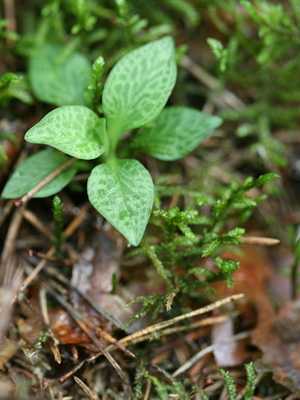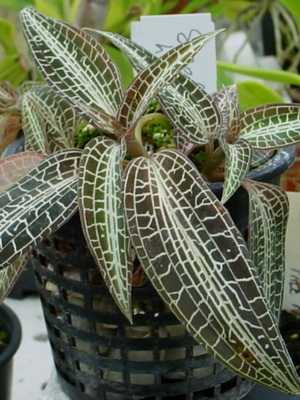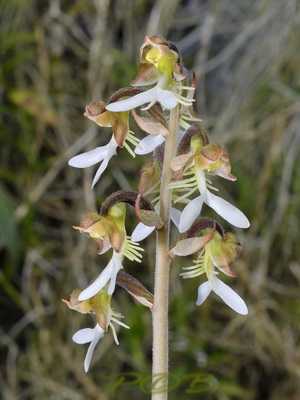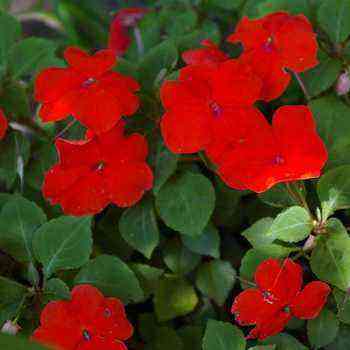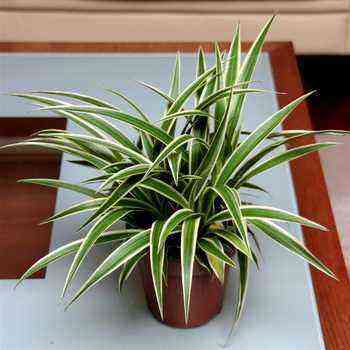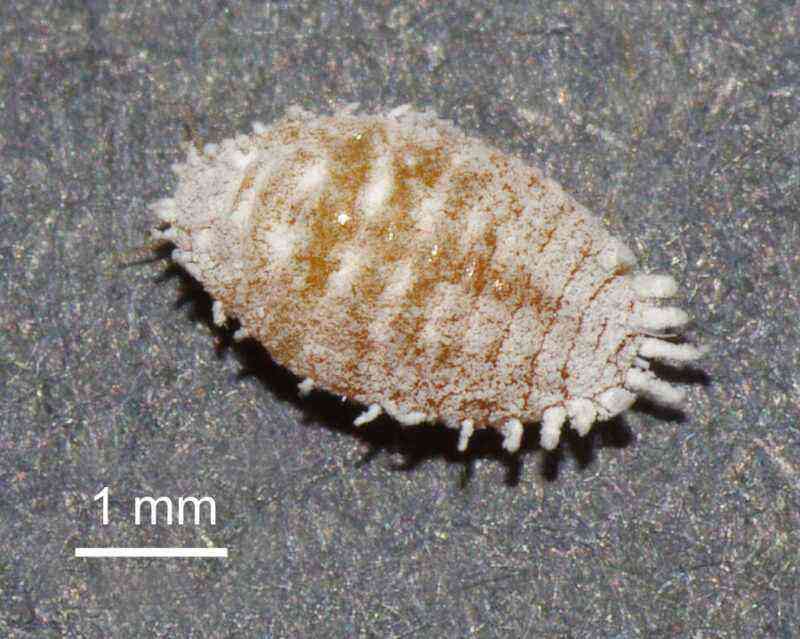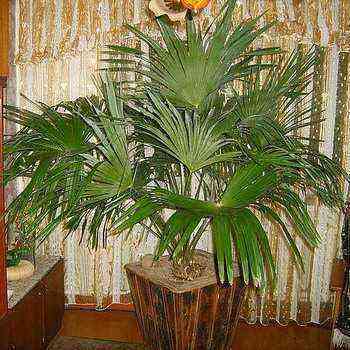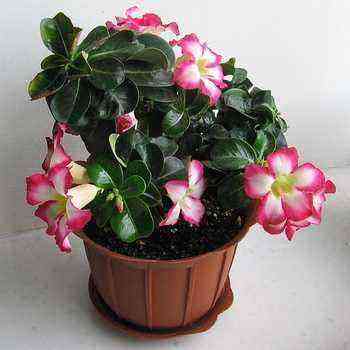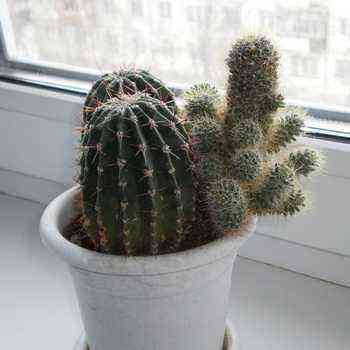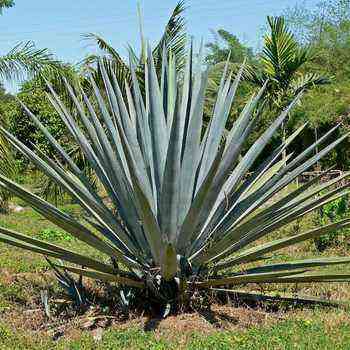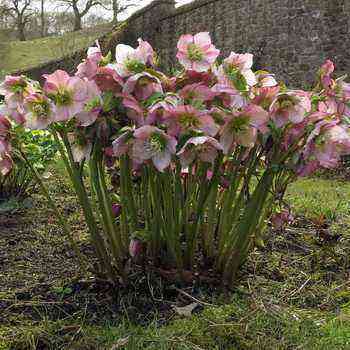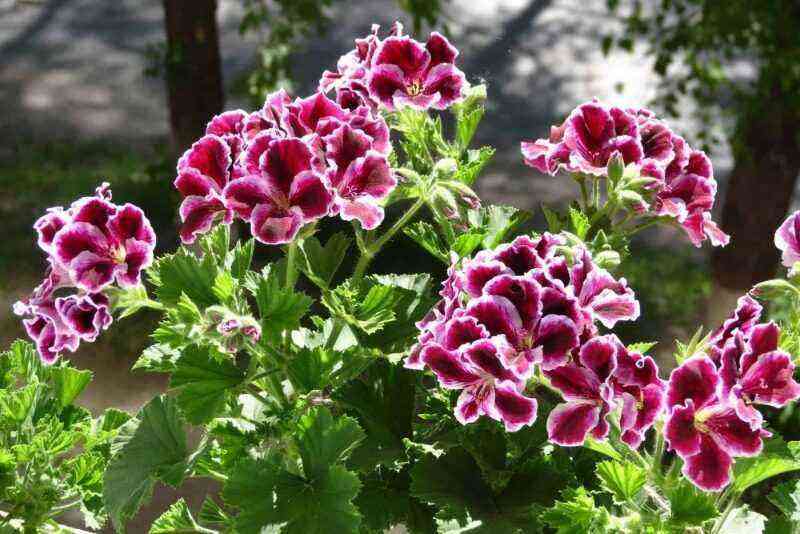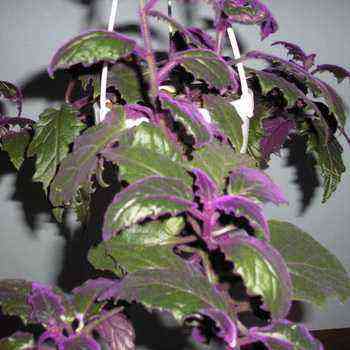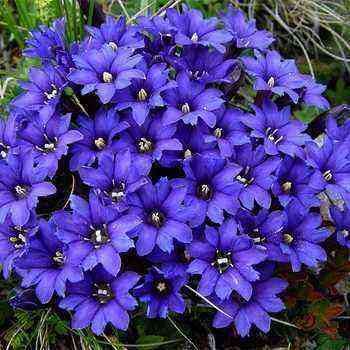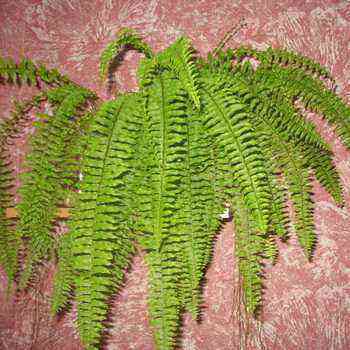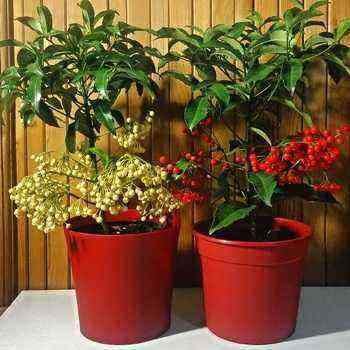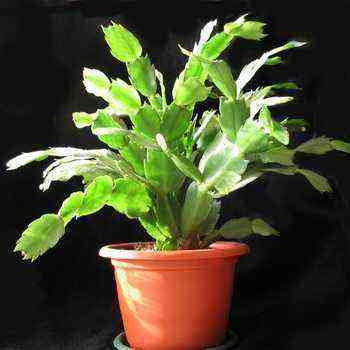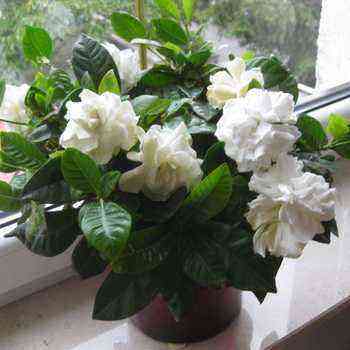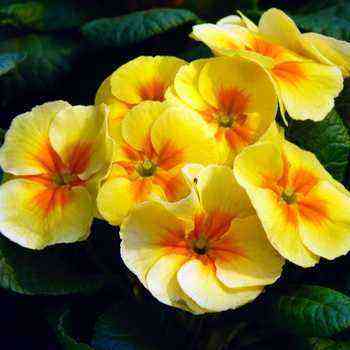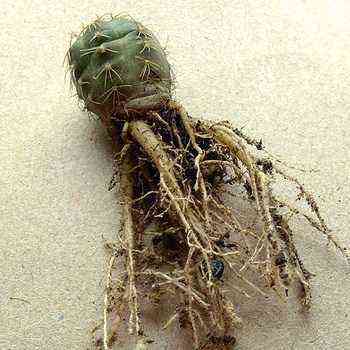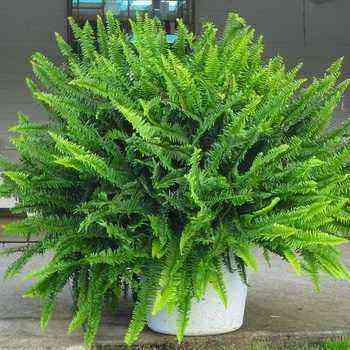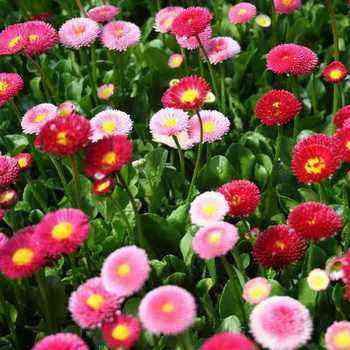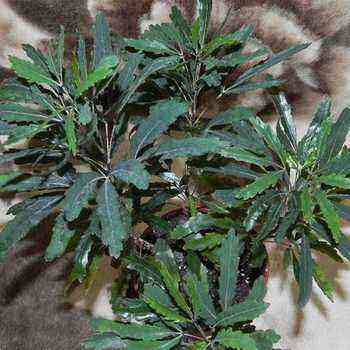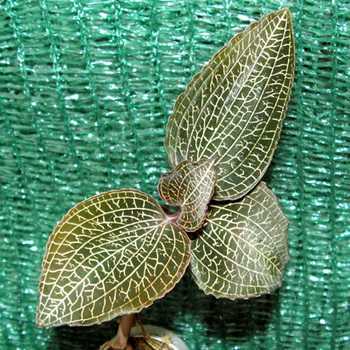
Precious orchids are prized for their beautiful leaves. Plants differ from each other in foliage color (light green, almost black, light cherry, silvery, etc.), color of veins, pattern and intensity of their location.
As you can see in the photo, the flowers of precious orchids are medium-sized, collected in brushes, often white. Some of them have a pleasant aroma. In nature, orchids interbreed freely with each other.
All precious orchids should be kept in a moderately warm environment (in summer up to +25 ° C, in winter up to +22 ° C) with high humidity, with the exception of ludisia and goodayera. These conditions can be created in aquariums or special mini-greenhouses.
Precious orchids grow well on pure sphagnum, subject to periodic feeding or on peat with sphagnum. Orchids can be fed at the same time as watering by adding liquid fertilizer at a low concentration. It is advisable to water the plants with boiled or distilled water, and spray with distilled or pure rainwater.
Precious orchids grow well under fluorescent lights, which should be approximately 30 cm away from the plants.
Precious orchid Ludisia and flower photo
Precious orchid Ludisia (Ludisia) was formerly known as Haemaria, but was changed to Ludisia in the 1970s because the name predates Haemaria by 15 years.
The best known of all precious orchids and easy to grow is Ludisia discolor.
Originally described as Goodyera discolor, this name is still used by some collectors and in older specialist literature. Ludisia Orchid is prized for its beautiful leaves – velvety, olive or purple, with shimmering light veins. Flowers appear in the winter months, white with a slight yellowness on the column, last a long time.
They bloom on a high peduncle. There are many colored forms of ludisia in culture.
Ludisia colorless Dawsoniana (Ludisia discolor var. Dawsoniana) – rather large plant (up to 30 cm tall without peduncle).
Look at the photo of the precious Ludisia orchid of this species – it has reddish-brown leaves with pink veins.
Flower Ludisia Odina (Ludisia discolor var. Odina, Ludisia “Odina”) – an orchid with a dark green-black leaf with silver veins.
Ludisia “Red Velvet” – “velvet” leaves with pink stripes.
As you can see in the photo of the flower Ludisia “Green Velvet”, the stem is covered with dark green “velvet” leaves with several contrasting veins.
Caring for the Ludisia orchid at home
Caring for the Ludisia orchid is simple – it is considered one of the most unpretentious among the “jewels”. It adapts well to various temperature conditions, grows successfully in rooms, as it is relatively undemanding to air humidity. When caring for Ludisia at home, it is desirable that the night temperature of the content is always 4 ° C lower than the daytime. The plant is planted in wide, shallow pots, in a substrate of bark, semi-decomposed leaves and peat (1: 1: 2). The plant is fed during the period of active growth and flowering.
Orchid Makodes (with photo)
Representatives of the genus Makodes (MACODES) – terrestrial or epiphytic orchids with a sympodial growth type. The name Macodes comes from the Greek macos (length, stretch), reflecting the elongated shape of the lip.
Orchid Makodes has up to 7 species found in the tropical rainforests of Southeast Asia and Oceania. The most famous species is Macodes petola. In nature, it is found on the islands of Java, from Sumatra to the Philippines, in Malaysia, New Guinea, where it grows in tropical forests (in mountainous shady forests) in high humidity conditions (on rocks covered with moss and humus, fallen tree trunks).
The stems spread along the surface of the substrate and branch out all the time, reaching a height of 7-8 cm. The color of velvety leaves varies from salad and emerald green to gray-green with golden veins.
As you can see in the photo, Makodes blooms with small flowers, after which the rosette dies off, giving lateral processes (babies).
It can grow in fairly poor lighting, but requires a constantly moist substrate, high air humidity (at least 80-90%) and warm content. That is why it is recommended to grow makodes petola in florariums or greenhouses. Stagnant water in the pan or inside the pot can very quickly lead to rotting of the lower part of the plant and roots, so watering should be regular, as the substrate dries. Water should be used only soft or filtered.
Summer temperature + 18. + 30 ° C; in winter – not less than +18 ° C. For successful cultivation, the night temperature can be 4 ° C lower than the daytime.
Makodes is fed carefully so as not to burn the delicate roots of the plant: once every 3 weeks from spring to autumn, and in the rest of the period every 5 weeks.
Orchid Anectochilus
Land orchids Anectochilus, Anectochilus (ANOECTOCHILUS), native to Asia, Indonesia, Australia and the islands of the western Pacific. Low rhizome plants with creeping horizontal stems. The leaves are relatively large, velvety, forming a rather dense rosette. The leaf blade is often with silvery, golden and reddish veins, and sometimes there are so many of them that the leaf looks like metal. Small flowers are collected in an erect raceme with glandular pubescence. The height of an adult plant usually does not exceed 10-15 cm.
For successful development in indoor conditions, it is necessary to create a period of partial dormancy, provided by a slight decrease in temperature and a decrease in watering (but without complete drying of the soil).
Anectochilus are very popular with breeders; there is a huge variety of decorative forms and hybrids, including intergeneric ones.
So, for example, a hybrid of anectochilus and hemaria (Haemaria x Anoectochilus) – anectomaria (x Anoectomaria) is not inferior in beauty to anectochilus, and the requirements for maintenance are similar to the care of hemaria.
Gudayer’s orchid creeping (with photo)
In the genus Goodyera creeping, Goodyera (GOODYERA) about 100 species of long-lived, terrestrial (rarely epiphytic) perennial orchids with leaves of different shades of green, often oblique, slightly fleshy with white or pink veins. The genus is named after the English botanist Goodayer.
Most often, the species is grown in room culture – Goodyera hispida. This small precious orchid grows naturally in India, Bhutan and Vietnam in the lower reaches of evergreen forests. The leaves are green with a pink bloom, pierced with a net of white and pink veins.
Pay attention to the photo of Creeping Guidayera: the peduncle grows to a height of 10 cm and blooms with green and white flowers.
In general, these are plants that require a moderate, cool content; it is better to place them not in direct sun, but deep into the apartment, in diffused light. Goodayera grows well in sphagnum moss.
